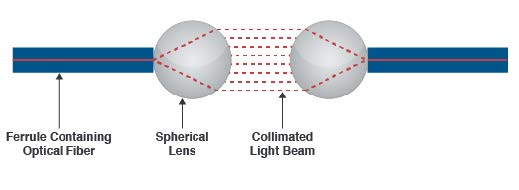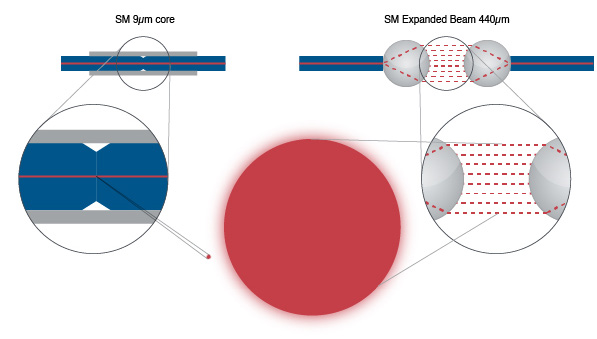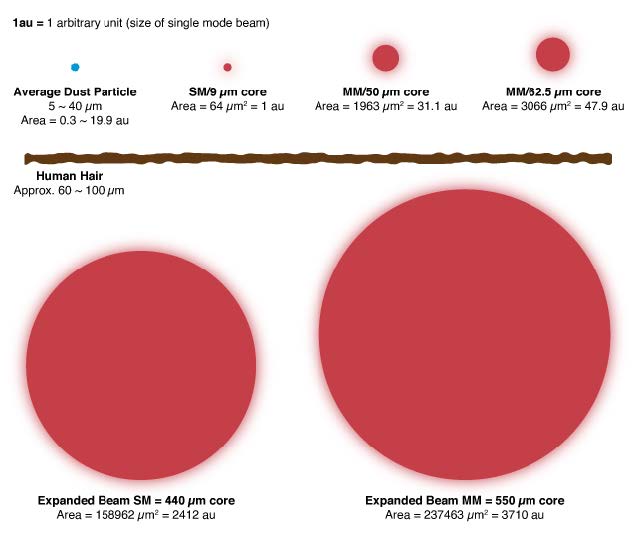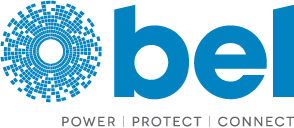How Expanded Beam Connectors Improve Reliability in Harsh Environments
Learn how expanded beam fiber optic connectors deliver endurance and reliability to withstand rugged environmental conditions and contaminates.
Download PDFTo meet the ever-increasing needs of consumers and providers, network cabling needs to provide reliable and robust connectivity in what can often be harsh environments. As fiber continues to displace copper, it must be able to withstand large variations in temperature and humidity. As a method for connecting fiber, expanded beam connection technologies are proving themselves to be dependable, consistent and efficient in the harshest environments.
LIMITATIONS OF PHYSICAL CONNECTIONS
To create a robust fiber-based network in what can be severe environments, the connections that are needed have had to evolve. The physical connections made between fiber cables have traditionally been achieved via direct contact; using a precision ceramic ferrule, physical connection can be made between fibers, offering single or multi-channel connectivity with a relatively low insertion loss of around 0.25 dB.
Figure 1. Comparison of PC and EB use cases.

However, using physical connections can result in misalignment (such as axial run-out). More importantly, it can be highly susceptible to contamination which is a major concern when making connections in harsh environments where cleanliness of the connection is difficult to control.
To remove or reduce the limitations of physical connections, expanded beam has continued to develop as a valid and robust alternative. Here, typically two lenses are used to expand, collimate, and then refocus the light from the transmitting fiber to the receiving fiber. Often the lenses in use are either GRIN (Graded Index) rod lenses or ball lenses.
Figure 2. Diagram of expanded beam components and operation.

CHOOSING THE RIGHT CONNECTOR TYPE
The practical advantage of expanded beam connections is reduced signal loss because contamination of the signal is reduced. These connections are not physical; the light travels over an air gap, so the potential wear on the connection is also reduced. Using precision ferrules to align the lenses being connected together, coupled with connection shells that align the lenses, can deliver an insertion loss of less than 1.0 dB.
Until now, the high cost of expanded beam connectors has meant their application has been limited to applications that can bear the cost. Military applications are a good example; expanded beam has proven to be the connection type of choice here, operating in every type of environment where the military needs to ensure that debris, dust, mud, oil and moisture will not adversely impact data transmissions. However, with a new range of low-cost expanded beam connectors now on the market their use is expected to increase across multiple sectors, including telecoms, healthcare and wherever reliable, low-latency data connections are vital to deliver next-generation services.
Figure 3. Comparison of PC and EB beam width.

Clearly, the application in question will determine which connection type is deployed. In harsh environments, physical connection and expanded beam behave differently depending on the environmental conditions and the potential contaminates. For example, moisture can be a major issue and physical connections can remove the vast majority of the moisture present during mating. Conversely, expanded beam can suffer from moisture forming on the lens as it degrades performance through scattering the light emitted. A detailed assessment of the environmental conditions under which the connections must perform will lead installers to the correct connection type for their application.
For developers within the IoT space, the choice of connector is important because many IoT applications will use technologies that require high levels of data cleanliness, while speed and efficiency are also vital. Many of the applications in the Machine-to-Machine (M2M) environment require low latency to function correctly. As these application environments could vary widely, choosing the correct network connector is critical.
Discover the Possibilities with Fibreco
Get ConnectedBENEFITS OF EXPANDED BEAM TECHNOLOGY
The limitations of direct contact connections in harsh environments – originally developed for data centers and telephone exchanges – have meant an increasing move towards expanded beam technologies, which are more flexible and designed to offer robust operational parameters in the most challenging installations.
The construction of expanded beam connectors explains why they can reduce the potential for damage and increase the level of reliable data throughput. Each terminating cable is shielded behind a lens that offers a wider active area for each connection. As the lenses do not touch, the possibility of damage via friction or impact on the joint is vastly reduced, which is particularly important in adverse conditions. The robustness against vibration and the low-levels of potential for damage make expanded beam an ideal choice for many challenging application environments.
For instance, with physical connections, dirt particles between Ø5 μm and Ø40 μm can cause transmission issues. Indeed, a dust particle of just Ø9 μm on a singlemode fiber core could completely block the transmission of the signal. In harsh environmental conditions, deploying this type of connector may be cost effective, but their susceptibility to damage by small dust particles makes expanded beam connections a more reliable choice.
Figure 4. Comparison of EB core size to other fiber types and dust particles.

Expanded beam employs a number of supporting technologies to provide robust and reliable connections between terminals. Multi-channel expanded beam connector inserts have continued to evolve, as expanded beam has matured. Here, the inserts typically consist of a stainless metal housing that mounts 1 to 16 spherical lenses. The inserts are spring-loaded to ensure correct alignment of the lenses when the terminals are mated. The ability to change the termini in the event of damage without the need to re-terminate the fiber cabling feed is a major advantage.
Ultimately, the conditions within which the cabling and connectors will be placed governs which connection system should be used. Physical contact connections currently have lower insertion losses than expanded beam, but their fragility in harsh or challenging environments can mean they have poor performance over time and require regular cleaning and maintenance. Expanded beam is a proven connection technology that requires low maintenance and withstands extremes in temperature and moisture, making it more suitable for connections in severe conditions.
RELIABLE FIBRECO CONNECTIONS
As demand for more reliable and efficient network connections increases, the Fibreco fiber optic connectors and cable assemblies from Cinch Connectivity Solutions (Bel group) offer expanded beam connection solutions that meet today’s exacting standards.
Figure 5. Example expanded beam solutions.

Using the MIL-DTL-83526 specification, Fibreco Junior expanded beam connectors offer up to four multi-mode or single-mode fiber optic channels. For harsh environment deployments the Junior is excellent as it offers fully sealed hermaphroditic construction, is field terminable and repairable using standard fiber optic termination tools and equipment.
The Fibreco expanded beam insert utilizes a unique, patented optical arrangement whereby the critical interface between the optical fiber and the lens is permanently sealed in a controlled atmosphere during manufacture. This ensures that no dust, moisture or other contaminants can migrate into the optical path during the product’s life.
In addition, the Geo-Beam series of connectors, including the Geo-Beam EX and Geo-Beam BA, meet the ATEX directive and IECEx 60079 for use in Zone 1 Hazardous Areas, with the BA connector offering force-only break apart when this is needed. And the Junior expanded beam connector is compatible with all MIL-DTL-83526 connectors, Tyco Pro-Beam Junior, Stratos HMA/HsMA connectors and the QPC QMINI connector.
Fibreco understands the different connection scenarios that engineers might be presented with. Offering a range of connection options, no matter the number of connection channels in use, cable assemblies and field splicing kits are also available.
The continued expansion of data-based services requires fast, efficient and reliable networks to support them. Fiber optic technology is the basis of these networks, but it still requires terminal connection technologies that can perform in all environments. Expanded beam delivers the efficient connections now demanded with a level of reliability that physical connection can’t match, particularly when used within harsh operating environments.

Learn more about the range of expanded beam connection technologies from Fibreco.
View Products